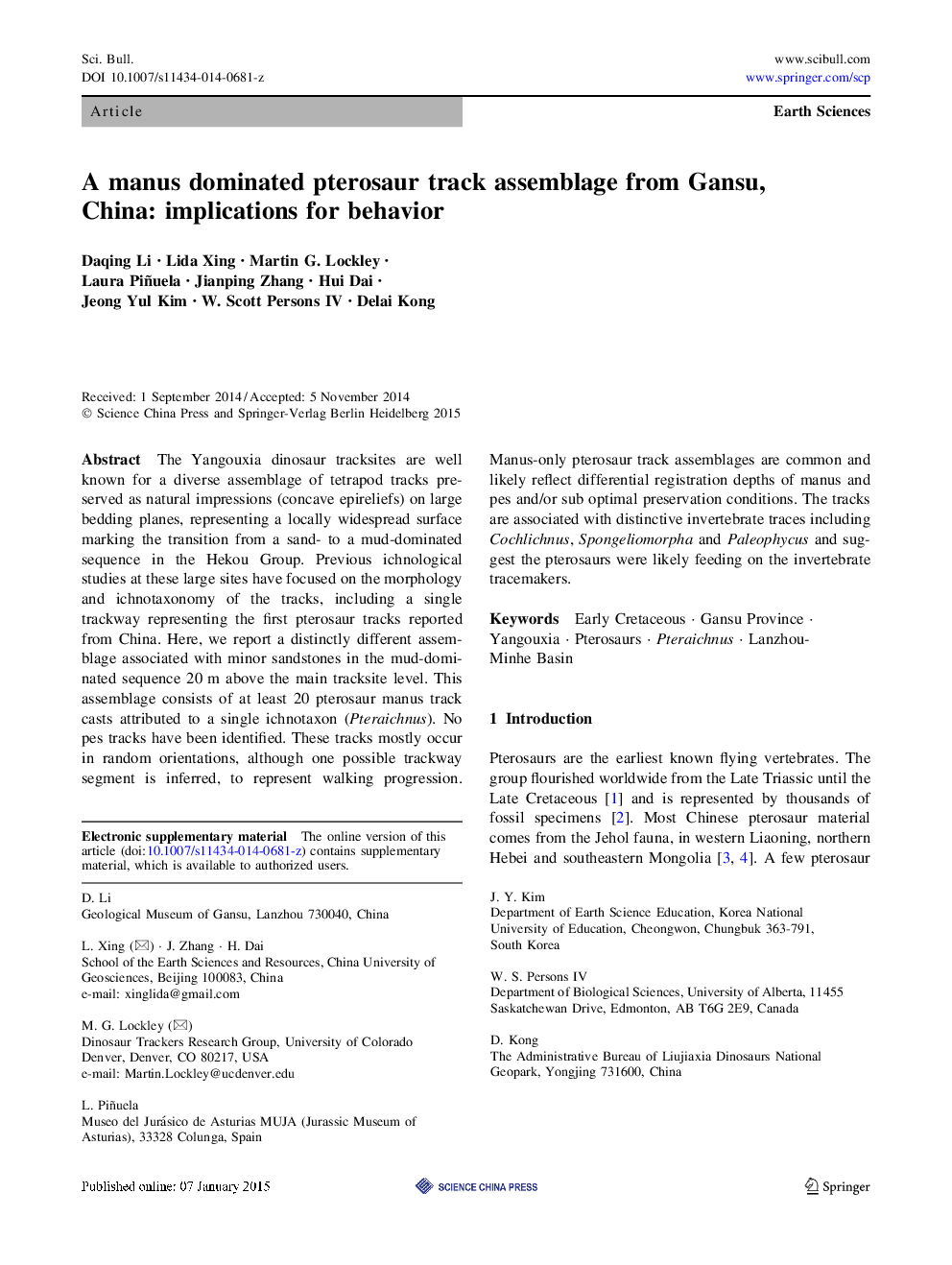| Article ID | Journal | Published Year | Pages | File Type |
|---|---|---|---|---|
| 10998223 | Science Bulletin | 2015 | 9 Pages |
Abstract
The Yangouxia dinosaur tracksites are well known for a diverse assemblage of tetrapod tracks preserved as natural impressions (concave epireliefs) on large bedding planes, representing a locally widespread surface marking the transition from a sand- to a mud-dominated sequence in the Hekou Group. Previous ichnological studies at these large sites have focused on the morphology and ichnotaxonomy of the tracks, including a single trackway representing the first pterosaur tracks reported from China. Here, we report a distinctly different assemblage associated with minor sandstones in the mud-dominated sequence 20Â m above the main tracksite level. This assemblage consists of at least 20 pterosaur manus track casts attributed to a single ichnotaxon (Pteraichnus). No pes tracks have been identified. These tracks mostly occur in random orientations, although one possible trackway segment is inferred, to represent walking progression. Manus-only pterosaur track assemblages are common and likely reflect differential registration depths of manus and pes and/or sub optimal preservation conditions. The tracks are associated with distinctive invertebrate traces including Cochlichnus, Spongeliomorpha and Paleophycus and suggest the pterosaurs were likely feeding on the invertebrate tracemakers.
Related Topics
Physical Sciences and Engineering
Chemistry
Chemistry (General)
Authors
Daqing Li, Lida Xing, Martin G. Lockley, Laura Piñuela, Jianping Zhang, Hui Dai, Jeong Yul Kim, W. Scott IV, Delai Kong,
